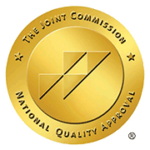Sertraline (Zoloft): What Is Sertraline Used For and How Does It Work?

Excessive worry, fears, panic attacks, and hopelessness. These aren’t easy issues to manage – and many people need support in doing so. Which often raises two questions, “What is sertraline?” and “What is sertraline used for?”
Finding the courage to talk to a professional about what you’re going through can be tough. But the idea of antidepressants might be even more difficult to wrap your head around. There are lots of things to consider: How might you react to an antidepressant? What are the side effects? What will happen if they don’t work?
These are all important questions to ask. Sertraline tends to be subtle but effective – but is it right for you? While sertraline helps many people manage their issues, it doesn’t fit well for everyone. Mission Connection can discuss the potential benefits of sertraline for your needs, as well as any side effects associated with it.
This page also helps put the spotlight on sertraline to increase your understanding about whether it’s the right antidepressant for you or someone you care about by discussing:
- What sertraline is and the mental health conditions it’s used to treat
- If sertraline is suitable for use in children and adolescents
- What the typical starting dose of sertraline is
- How long sertraline takes to work
- The most common side effects of sertraline
- If it’s OK to stop taking sertraline suddenly
- If sertraline interacts with other medications or substances
- How sertraline compares to a similar antidepressant
- Where to find professional support for using medication in mental health treatment

What Is Sertraline, and What Mental Health Conditions Does It Treat?
Sertraline falls into the category of a “second-generation” antidepressant. In a nutshell, this means that it’s a newer medication than ones such as tricyclic antidepressants, which were developed in the 1950s. These second-wave medications tend to be better tolerated and have fewer side effects than older medications, so they are usually first-line treatments for mental health conditions.1
Second-generation antidepressants include selective serotonin reuptake inhibitors (SSRIs) and serotonin-norepinephrine reuptake inhibitors (SNRIs). Sertraline is an SSRI, meaning that it works to reduce symptoms of low mood by boosting the availability of a chemical called “serotonin” in the brain.
Serotonin is nicknamed the “feel-good” chemical for good reason. It carries messages from nerve cell to nerve cell in the brain, improving positive emotions and allowing us to feel more alert and focused.2
Sertraline is just one of many different SSRIs. While a healthcare provider might determine that sertraline is suitable for your symptoms, they could also recommend one of the following based on your needs.
Types of SSRIs:
- Fluoxetine (Prozac): The prototype SSRI, fluoxetine is currently the 19th most prescribed drug in the United States and is used to treat conditions such as depression, anxiety, obsessive-compulsive disorder (OCD), and panic attacks2
- Citalopram (Celexa): Most commonly used to treat major depression, citalopram can also be used off-label to treat a variety of other issues
- Escitalopram (Lexapro): Frequently used to treat depression and anxiety, and is considered to be one of the most easily tolerated antidepressants by both adults and young people
- Paroxetine (Paxil): Similar to other SSRIs, paroxetine is suitable for treating many different mental health conditions
Sertraline for Depression and Anxiety
Firstly, sertraline may work better for improving symptoms of anxiety than depression – at least initially. Evidence shows that sertraline eases the signs of nervousness, irritability, and restlessness by roughly the six-week mark for people with anxiety. However, in contrast, it could take up to 12 weeks for even modest improvements in low mood associated with depression.4
Yet, further evidence shows that sertraline may be useful for improving mild to moderate depression, especially regarding signs of anxiousness, quality of life, and personal views of well-being.5 To put this information another way: sertraline could work for your symptoms of depression if they don’t interfere with your life to the extent that you struggle to function.
If depression is affecting your daily life, then a different SSRI – or potentially an SNRI or tricyclic antidepressant – may be more suitable for your needs. Talking to a healthcare provider, such as Mission Connection, can help you get answers on what medications could work best for you.
Can Sertraline Be Used in Children and Adolescents?
All antidepressants – including sertraline – carry what is called a “black box warning,” which is the strongest warning the FDA insists a prescription medication must carry. This essentially means that there’s a potential risk of increased suicidal thoughts in people under the age of 24 when taking antidepressants.6 This risk is small, but because it exists at all, there’s reason to be cautious.
For this reason, sertraline in teenagers is carefully monitored by a healthcare provider to determine a young person’s reaction – especially in the early stages of treatment.
What Is the Typical Starting Dose of Sertraline?
The starting dose of sertraline depends on several factors, such as your symptoms and age. However, healthcare providers usually aim to start people on the lowest recommended dosage to help manage potential side effects, and then work up from there as needed.
For adults, the typical starting dose for major depressive disorder MDD) and obsessive-compulsive disorder (OCD) is 50mg per day, with a clinical range that may go up to 200mg depending on individual response and tolerance. For conditions such as panic disorder and post-traumatic stress disorder (PTSD), the starting dose may be lower – around 25mg per day – to ease the body into the medication and reduce the risk of side effects.
In children and adolescents, starting doses vary by age and condition. For OCD in children aged 6 to 12 years, the typical starting dose is 25mg per day, with a possible increase up to 200mg over time if needed. For adolescents aged 13 to 17 years, the starting dose is generally 50mg per day, also within a clinical range of 50 to 200mg.
Note: While OCD is the only condition for which sertraline is officially approved in minors, healthcare providers may prescribe it for other mental health concerns if appropriate. In such cases, the dose will usually be based on the severity of symptoms and the child’s overall health profile.
How Long Does Sertraline Take to Work?
The speed at which Zoloft takes to work can vary from person to person. For instance, some people might see improvements at the two-week mark. Yet, others might not see any difference in symptoms until six weeks. Moreover, how long sertraline takes to work might depend on the condition it’s prescribed for. While it often treats issues such as anxiety faster, it could take as long as 12 weeks to relieve signs of PTSD or OCD.7
In other words, treatment with sertraline might feel like a bit of a waiting game, but if the drug is the right fit for you, it should pay off. In the meantime, therapy and lifestyle changes can help speed up the process.
In the early stages, the signs Zoloft is working can be subtle. The following indicators might be a sign that there’s a shift happening in your brain chemistry:
Improvements in energy, sleep, and appetite- Reduced physical aches and pains
- A better ability to relax and manage stress
- Greater sense of well-being
- Feeling more like “yourself”
If you don’t notice any improvement in symptoms after the initial adaptation period, talk to your healthcare provider about your concerns. It may be the case that you need to up your dosage – or even switch to a different type of med, such as an SNRI.
What Are the Most Common Side Effects of Sertraline?
As with all medications, sertraline does pose a risk of side effects in some people. However, these risks are typically mild and should go away after the initial “getting used to” period. If side effects don’t go away after a couple of weeks or are interfering with your day-to-day life, it’s best to speak to your provider. They can either adjust your dose or talk to you about the possibility of another antidepressant.
Sertraline Side effects include:
- Nausea or upset stomach
- Headaches
- Problems sleeping (especially at the start of treatment)
- Brain jolts (feeling like there’s an electric shock in your head)
- Dizziness
- Sleepiness
- Dry mouth
- Diarrhoea
- Sexual dysfunction
Can I Stop Taking Sertraline Abruptly?
Zoloft withdrawal symptoms are typically not life-threatening, but can be highly unpleasant and include:8
A return of emotional and physical symptoms- Nausea
- Vomiting
- Lethargy
- Sensory issues like brain “zaps”
- Difficulties sleeping
- Confusion
- Headaches
- Pins and needles
- Irritability and agitation
- Seizures
How to taper off Zoloft involves a gradual dose reduction, meaning taking smaller amounts over weeks and months until you’re off it entirely. A healthcare provider can create a tapering plan for you that reduces the risk of more severe withdrawal symptoms. Mission Connection can create a sertraline tapering plan based on your needs.
Does Sertraline Interact With Other Medications?
Zoloft and other antidepressants: Sertraline can increase the risk of side effects from other antidepressants, reducing people’s ability to tolerate them. These antidepressants include fluoxetine, duloxetine, venlafaxine, escitalopram, and amitriptyline.- Zoloft and antipsychotics: When combined with antipsychotics, such as risperidone and olanzapine, sertraline can cause an irregular heartbeat.
- Zoloft and alcohol interaction: Alcohol can interfere with sertraline’s ability to improve mood. It can also worsen side effects such as dizziness and lethargy. Further, it can lead to rarer side effects such as tremors, seizures, or hallucinations.
- Zoloft and St. John’s Wort: Both sertraline and St. John’s Wort work to boost serotonin levels in the brain. However, when taken together, they can lead to a potentially life-threatening condition called serotonin syndrome.
These are not the only substances that sertraline can interact with. There’s also a risk of complications when combined with anti-inflammatories, anti seizure medications, and blood thinners. For this reason, it’s important to be open and honest with your provider about any medications or substances you take, as well as about any potential interactions you experience.
Sertraline vs Fluoxetine: Which Is Better for You?
Fluoxetine is an alternative SSRI option to sertraline. There’s no clear answer on whether fluoxetine (Prozac) is better than sertraline (Zoloft). At the end of the day, your provider will make a decision based on your symptoms and response to medication.
For instance, fluoxetine might be better for your needs if you have more depression symptoms than anxiety, while fluoxetine may be a more suitable fit for PTSD. The side effects of both meds might also differ, with Prozac sometimes causing more headaches and lack of energy in comparison to Zoloft’s higher rates of nausea and sexual dysfunction.
If you’re wondering if sertraline or fluoxetine is best for you, Mission Connection can evaluate your symptoms, circumstances, and responses to medication. Often, a process of trial and error is needed when starting medication to treat a mental health condition – but your happiness and well-being are at the center of every decision.
Mission Connection: Balancing Mental Health Treatment Through Therapy and Medication
If you’re struggling to cope with your mental health, medication might sound like the answer to all your needs. While, yes, medication often plays a valuable part in treating mental health conditions, it’s only one piece of the puzzle.
Mission Connection balances medication management with getting to the root cause of mental health issues. Our solutions don’t rest on filling out prescriptions – they’re based on building relationships, trust, and meaningful care.
We offer a variety of therapies, designed to fit the needs of every person who comes to us. Whether residential, outpatient, or online telehealth services are the best fit for you, our team can create a treatment package that incorporates all aspects of your care.
If you want to know more about Mission Connection’s treatment options or just have questions to ask about medication, our team is here to help. Contact us today via telephone or fill out our confidential contact form.

References
- Hillhouse, T. M., & Porter, J. H. (2015). A brief history of the development of antidepressant drugs: From monoamines to glutamate. Experimental and Clinical Psychopharmacology, 23(1), 1. https://doi.org/10.1037/a0038550
- Psychology Today. (n.d.). SSRIs. https://www.psychologytoday.com/gb/basics/ssris
- Sanchez, C., Reines, E. H., & Montgomery, S. A. (2014). A comparative review of escitalopram, paroxetine, and sertraline: Are they all alike? International Clinical Psychopharmacology, 29(4), 185. https://doi.org/10.1097/YIC.0000000000000023
- Hayes, J. F., Marston, L., Walters, K., King, M. B., & Osborn, D. P. J. (2019). Sertraline for depression in primary care: A randomized controlled trial. BMJ, 366, l5655. https://www.bmj.com/content/366/bmj.l5655
- Lewis, G., Duffy, L., Ades, A., Amos, R., Araya, R., Brabyn, S., Button, K. S., Churchill, R., Derrick, C., Dowrick, C., Gilbody, S., Fawsitt, C., Hollingworth, W., Jones, V., Kendrick, T., Kessler, D., Kounali, D., Khan, N., Lanham, P., & Lewis, G. (2019). The clinical effectiveness of sertraline in primary care and the role of depression severity and duration (PANDA): A pragmatic, double-blind, placebo-controlled randomised trial. The Lancet. Psychiatry, 6(11), 903. https://doi.org/10.1016/S2215-0366(19)30366-9
- American Society of Health-System Pharmacists. (2022, January 15). Sertraline. MedlinePlus. https://medlineplus.gov/druginfo/meds/a697048.html
- Drugs.com. (2025, January 3). How long does Zoloft (sertraline) take to work? https://www.drugs.com/medical-answers/long-zoloft-sertraline-work-3565128/
- Drugs.com. (2025, April 28). How long does Zoloft (sertraline) withdrawal last? Retrieved May 14, 2025, from https://www.drugs.com/medical-answers/long-sertraline-withdrawal-3573673/:contentReference[oaicite:3]{index=3}
- Medical News Today. (2024, February 13). Zoloft interactions: Alcohol, medications, and other factors. https://www.medicalnewstoday.com/articles/drugs-zoloft-interactions





